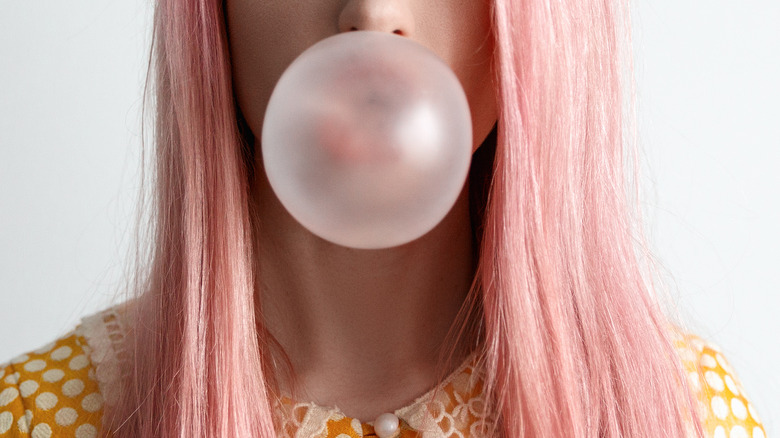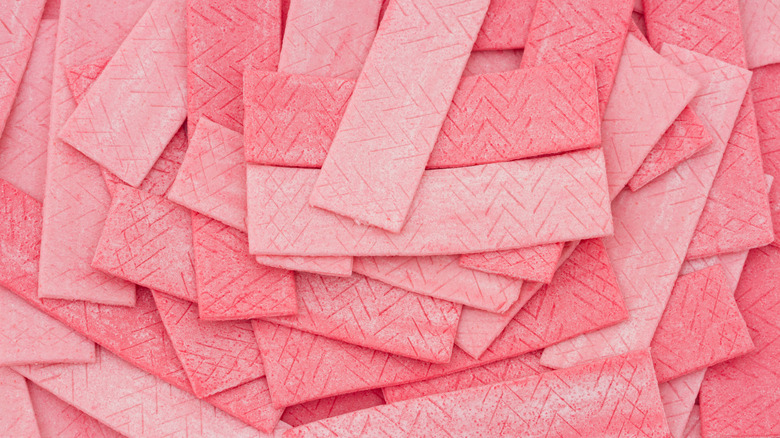Here's Where Bubblegum Flavor Really Comes From
Bubblegum. The iconic, wildly sugary, pastel pink, elastic candy phenomenon with a taste, hue, and aroma all its own. Not only is it a popular flavor in sweets, but it's also used to enrich cosmetics, sodas, medicines, even oral care products like toothpaste and mouthwashes. First, let's start with a quick history lesson. Chewing gum — as either a product or a pastime — has been around for millennia. In fact, anthropologists have discovered that northern Europeans chewed on bite-sized pieces of birch bark around 9,000 years ago, and ancient Mayans and Aztecs chomped on chicle, a natural gum from Mesoamerican trees, according to NPR. The uses of chewing gum way back then are pretty much the same as they are today — to freshen breath and relieve boredom.
Then, in the late 1840s, American businessman John Curtis created the first commercial chewing gum made from spruce tree resin. Curtis opened the world's first chewing gum factory in Portland, Maine in the 1850s (via History). Since then, chewing gum — bubblegum, in particular — has made leaps and bounds with its formulas and ubiquitous marketability. With the help of inventors and businessmen, Thomas Adams and William Wrigley Jr., the competition exploded. Bubblegum as we know it finally came to be in 1928, when a Fleer Chewing Gum Company employee named Walter Diemer concocted a formula for the first true blowable bubblegum, which he appropriately branded Dubble Bubble. But what exactly creates the bubblegum flavor?
Where does bubblegum flavor come from?
Other than "incredibly satisfying sugar explosion," it's tricky to pinpoint the distinct flavor of bubblegum. However, there have been a surprisingly high number of investigations over the years to get to the bottom of this sweet mystery. As it turns out, the original bubblegum flavor is a magical combination of a few fruity notes.
This is where the beauty of science comes in. It all boils down to chemistry. According to Thrillist, classic bubblegum is typically made from a mixture of acidic esters — or chemical compounds that smell like fruits and therefore mimic fruit flavors. Bob Bouclin, the president of Skokie, Illinois-based food and pharmaceutical flavoring company Knechtel, says that traditional bubblegum can be described as a blend of "strawberry + banana + fruit punch." Different esters can be added to create new flavor sensations, such as raspberry, blueberry, mango, kiwi, cherry, orange, lemon, or cinnamon.
Lastly, why pink? Well, remember our pal Walter Diemer? As the story goes, the only food dye that was readily available at the candy factory during the time of his awesome innovation was pink — which, as it turns out, is a lot more appetizing than the lovely gray shade that bubblegum actually is. So, there you have it! Enjoy your multi-flavored, chewable, pink face balloons, people.

